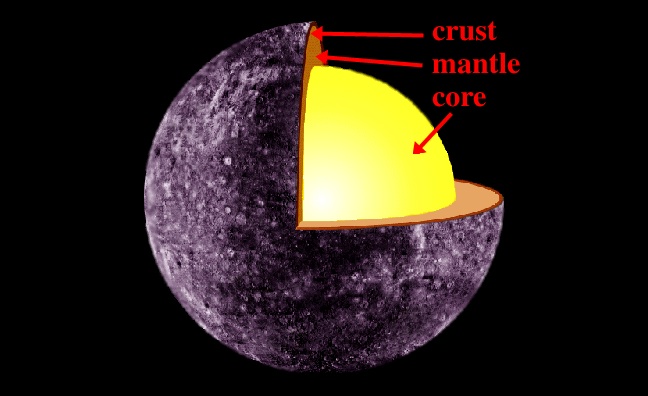[/caption]
Here’s a Mercury diagram, showing the interior of planet Mercury.
Mercury is the closest planet to the Sun, orbiting at an average distance of 57.9 million km from the Sun. It’s also the second densest planet in the Solar System, with an average distance of 5.427 grams per cubic centimeter. Based on this density, astronomers have some estimates about the interior structure of Mercury.
The center of Mercury is its metal core, similar to the Earth’s core. But in the case of Mercury, the core occupies 42% of the volume of Mercury, while the core of Earth is only 17%. And for some reason, the metal core of Mercury doesn’t create a magnetic field with the same intensity of Earth’s magnetic field. Mercury’s magnetosphere is only 1% as strong as Earth’s field.
Surrounding the core is Mercury’s mantle. This is a 500-700 km thick layer of rock, composed of silicates. And surrounding the mantle is Mercury’s crust. Based on observations made by Mariner 10 and Earth-based telescopes, astronomers think that Mercury’s crust is 100 – 300 kilometers thick. There are many large depressions in Mercury’s crust, and scientists think these formed as Mercury slowly cooled and contracted.
We’ve written many articles about Mercury for Universe Today. Here’s an article with a diagram of the Sun, and here’s a diagram of the Solar System.
If you’d like more info on Mercury, check out NASA’s Solar System Exploration Guide, and here’s a link to NASA’s MESSENGER Misson Page.
We’ve also recorded an episode of Astronomy Cast about Mercury. Listen here, Episode 49: Mercury.

